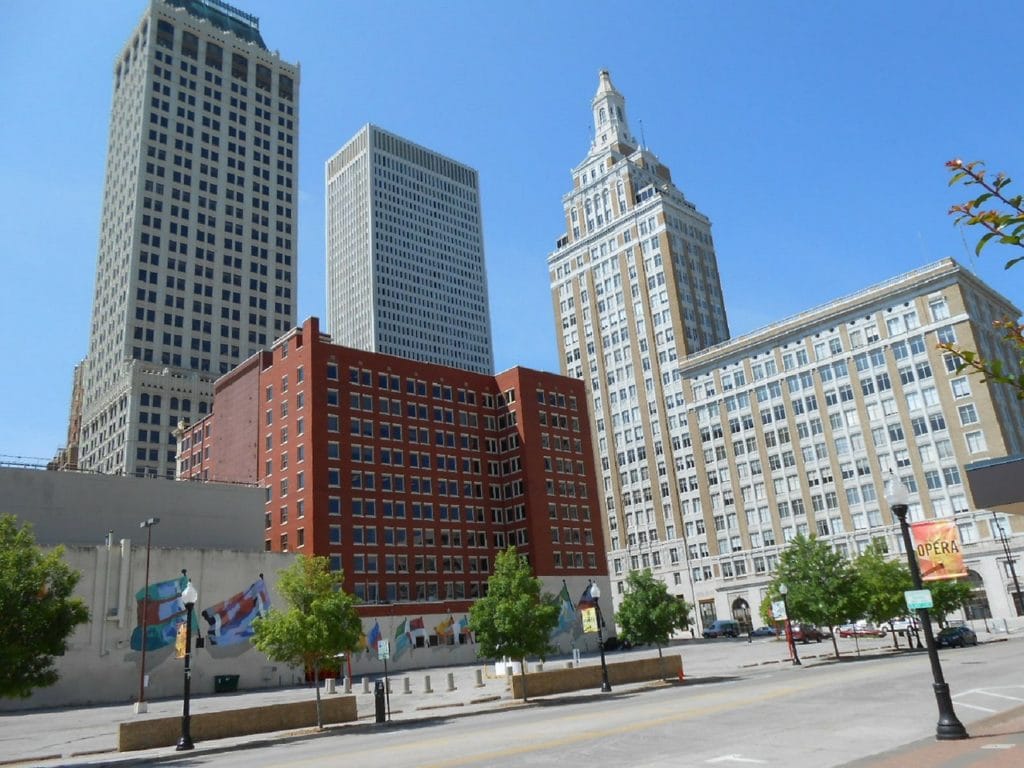
Article Summary: National Parks Near Tulsa
National Parks near Tulsa. There’s so much more to the Sooner State than the Philbrook Museum of Art. In this article, More Than Just Parks takes you to five incredible national park sites that are within a day’s drive of Tulsa.
I’ve been to so many of these amazing places since retiring from teaching in 2018. Did I mention that I taught history? I spent a lifetime teaching about the history behind these momentous sites. Then I got to see them firsthand. And now I’m sharing the stories of these incredible places with you. It doesn’t get any better than that!
Tulsa is famous for its well-preserved Art Deco architecture, big-booted performing arts scene, and Oklahoma-style barbecue joints.
It’s also famous for its rich history of oil production and as the birthplace of iconic Route 66.
It’s also home to some amazing national parks which are within a day’s drive (or less) from the city.
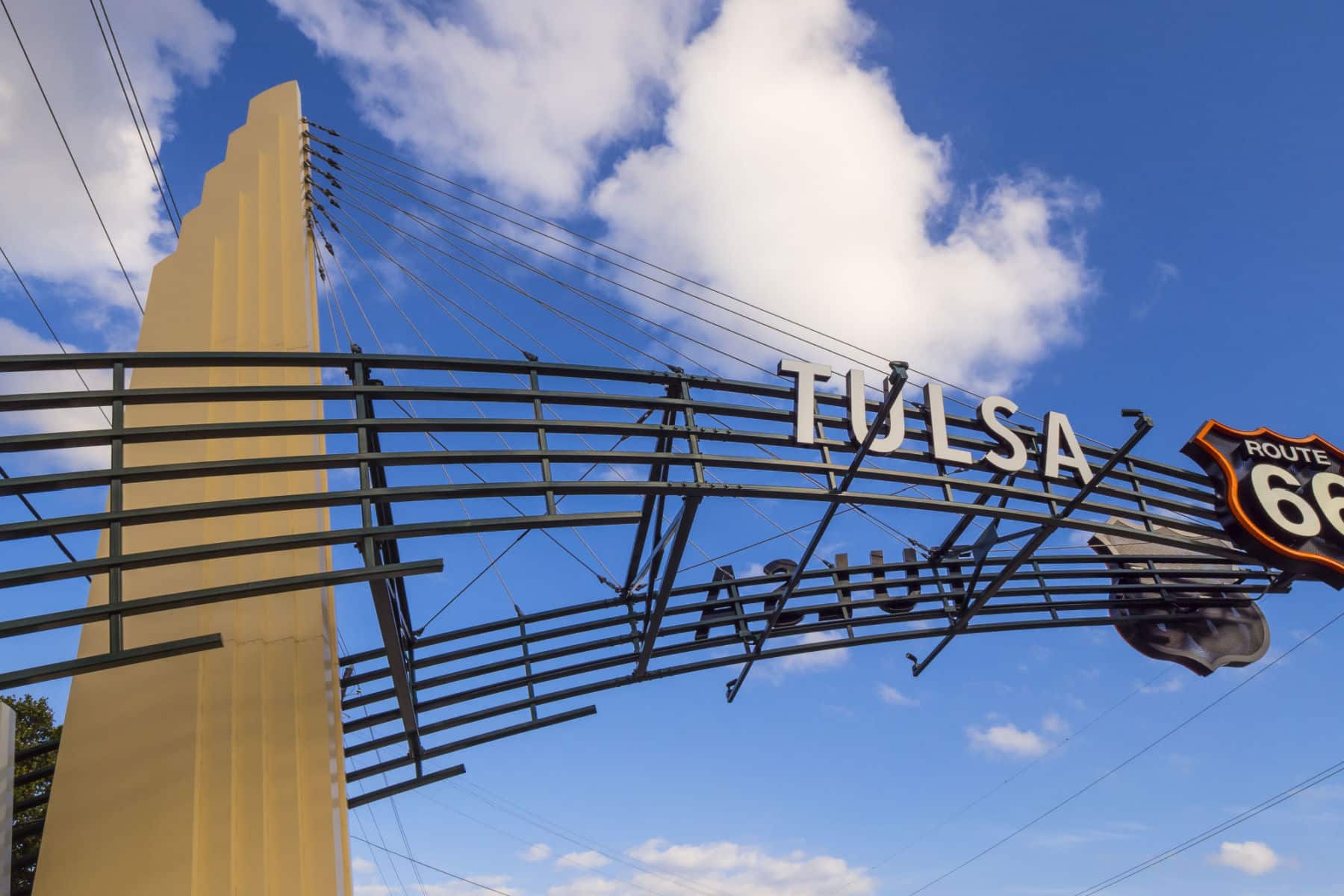
What Is A National Park?
We get asked that question a lot because there’s a difference between a “national park” and a “national park site.” To help you understand that difference you might want to check out our article titled: What Is A National Park Really?
If you’re planning a trip to the Tulsa area then one book that I highly recommend is: Insiders’ Guide® to Tulsa by Elaine Warner.
Now let’s go ahead with 5+ reasons why you’ll want to hop in your car and make a day’s drive from Tulsa to one of these truly amazing places.
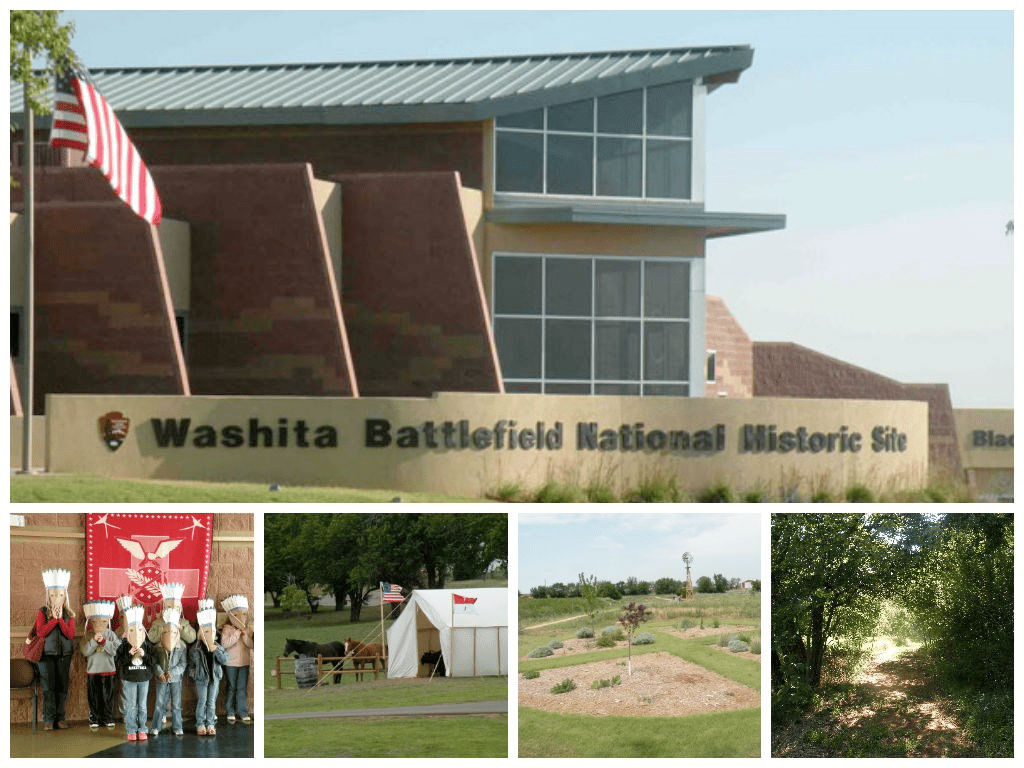
Table Of Contents: National Parks Near Tulsa
Best National Parks Near Tulsa
1. Chickasaw National Recreation Area
Distance From Tulsa: Two hours & 24 minutes via I-44 & US-377 S.
Chickasaw National Recreation Area is a public park located in the state of Oklahoma. It was established in 1902 as the Sulphur Springs Reservation and was later renamed Chickasaw National Recreation Area.
The park covers an area of approximately 9,888 acres and is known for its scenic beauty, recreational opportunities, and historical significance. The park features numerous natural springs, lakes, and streams, which provide a habitat for a diverse range of wildlife species. Visitors can enjoy outdoor activities such as camping, hiking, fishing, boating, and swimming.
In addition to its natural features, Chickasaw National Recreation Area also has several historical sites, including the Plaza Building, which was built in the early 20th century and is now used as a park museum.
The park also has several picnic areas, campgrounds, and a scenic drive, offering visitors many opportunities to relax and take in the beauty of the surrounding landscape.
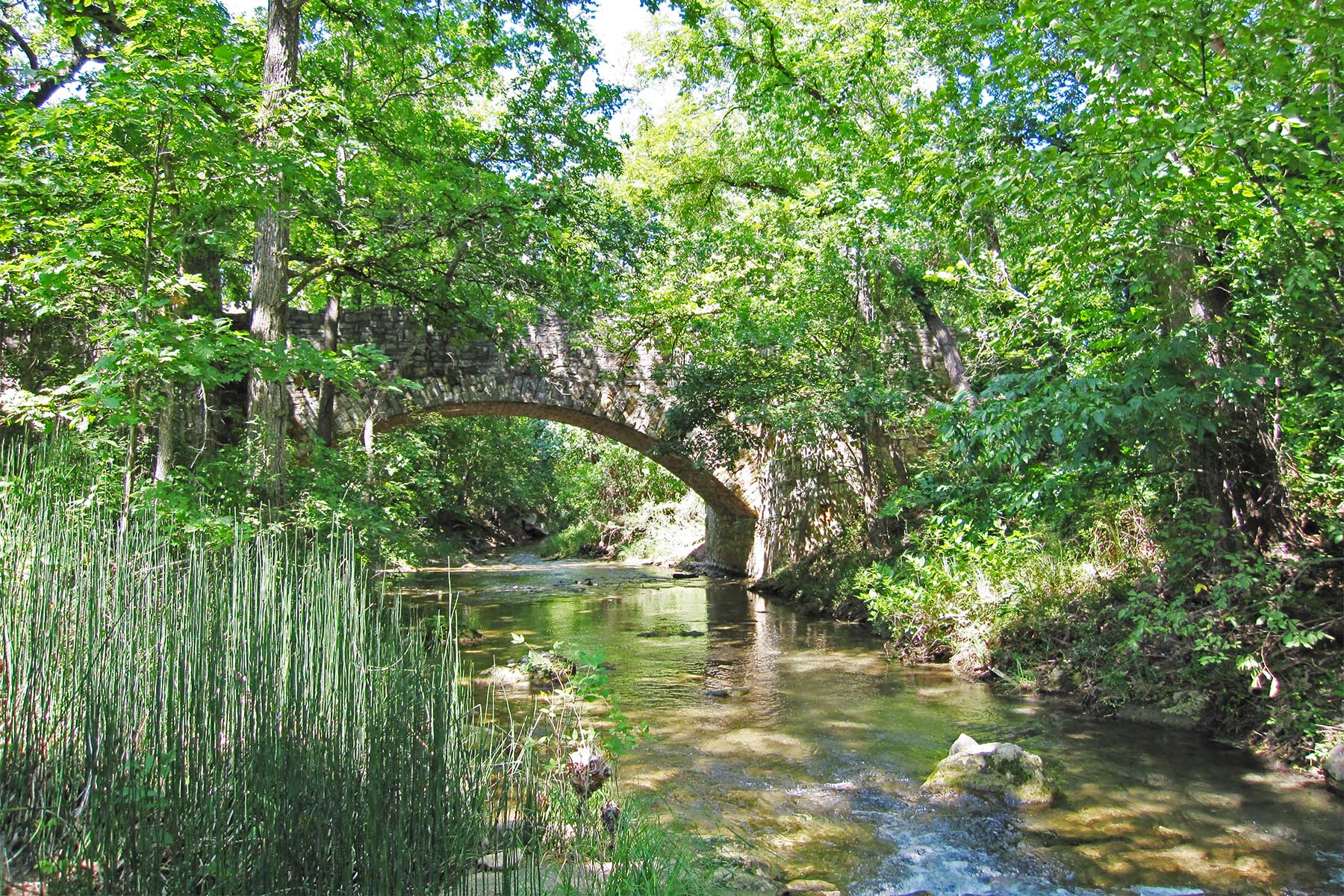
Recreational Opportunities
The park offers a variety of activities for visitors to enjoy, including:
- Swimming: The park has two swimming areas, Veterans Lake and Rock Creek, which are open during the summer months.
- Fishing: The park has several fishing opportunities, including at Veterans Lake and Rock Creek, which are stocked with bass, catfish, and other fish species.
- Hiking and Biking: There are several hiking and biking trails throughout the park, which range in difficulty and offer scenic views of the park’s natural beauty.
- Camping: The park has several campgrounds, including RV and tent camping sites.
- Picnicking: There are several picnic areas throughout the park, with tables and grills provided.
- Wildlife viewing: The park is home to a variety of wildlife, including white-tailed deer, raccoons, and opossums. The park is also home to a large number of birds, including turkey, quail, and many species of ducks.
- Ranger-led programs: The park offers ranger-led programs, such as guided hikes and campfire talks, that provide visitors with an opportunity to learn more about the area’s natural and cultural resources.
- Scenic Drives: The park has several scenic drives through the park that offer visitors the opportunity to see the park’s natural beauty from the comfort of their car.
- Mineral water pools and spas: The park contains several historic mineral water pools and spas that visitors can use and enjoy.
- Nature center: The park has a nature center where visitors can learn about the park’s natural and cultural history through exhibits and interactive displays.
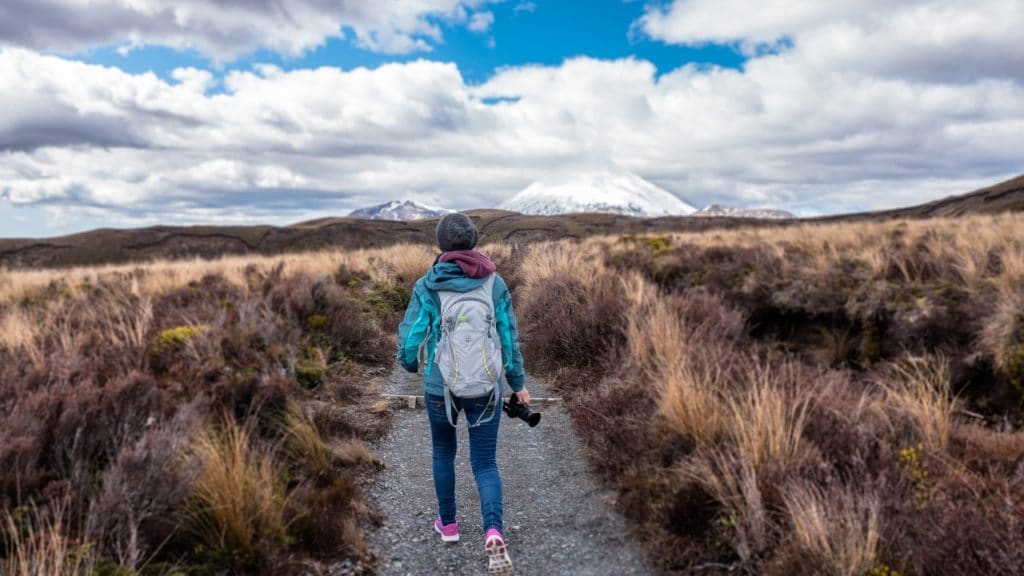
CHECK OUT: 4 EPIC IOWA NATIONAL PARKS
2. Deep Fork National Wildlife Refuge
Distance From Tulsa: 52 minutes via US-75 S.
Please Note: Deep Fork is technically not a national park site – managed by U.S. Fish & Wildlife.
Deep Fork National Wildlife Refuge covers an area of approximately 14,000 acres and was established in 1986 with the goal of conserving and preserving the habitat of migratory birds and other wildlife species.
The refuge is located along the Deep Fork River and is home to a variety of habitats, including bottomland hardwood forests, wetlands, and prairies. These habitats provide a home for a wide range of wildlife species, including waterfowl, shorebirds, songbirds, and mammals such as deer, beaver, and muskrats.
Visitors to Deep Fork National Wildlife Refuge can participate in a variety of outdoor recreational activities, including hiking, bird watching, fishing, and hunting (during designated hunting seasons). The refuge also has several hiking trails, observation towers, and picnic areas, providing visitors with ample opportunities to enjoy the natural beauty of the area.
In addition to its natural and recreational value, Deep Fork National Wildlife Refuge also plays an important role in the conservation of several species of birds, fish, and other wildlife that are threatened or endangered. By protecting and preserving their habitat, the refuge helps to ensure the survival of these species for future generations to enjoy.
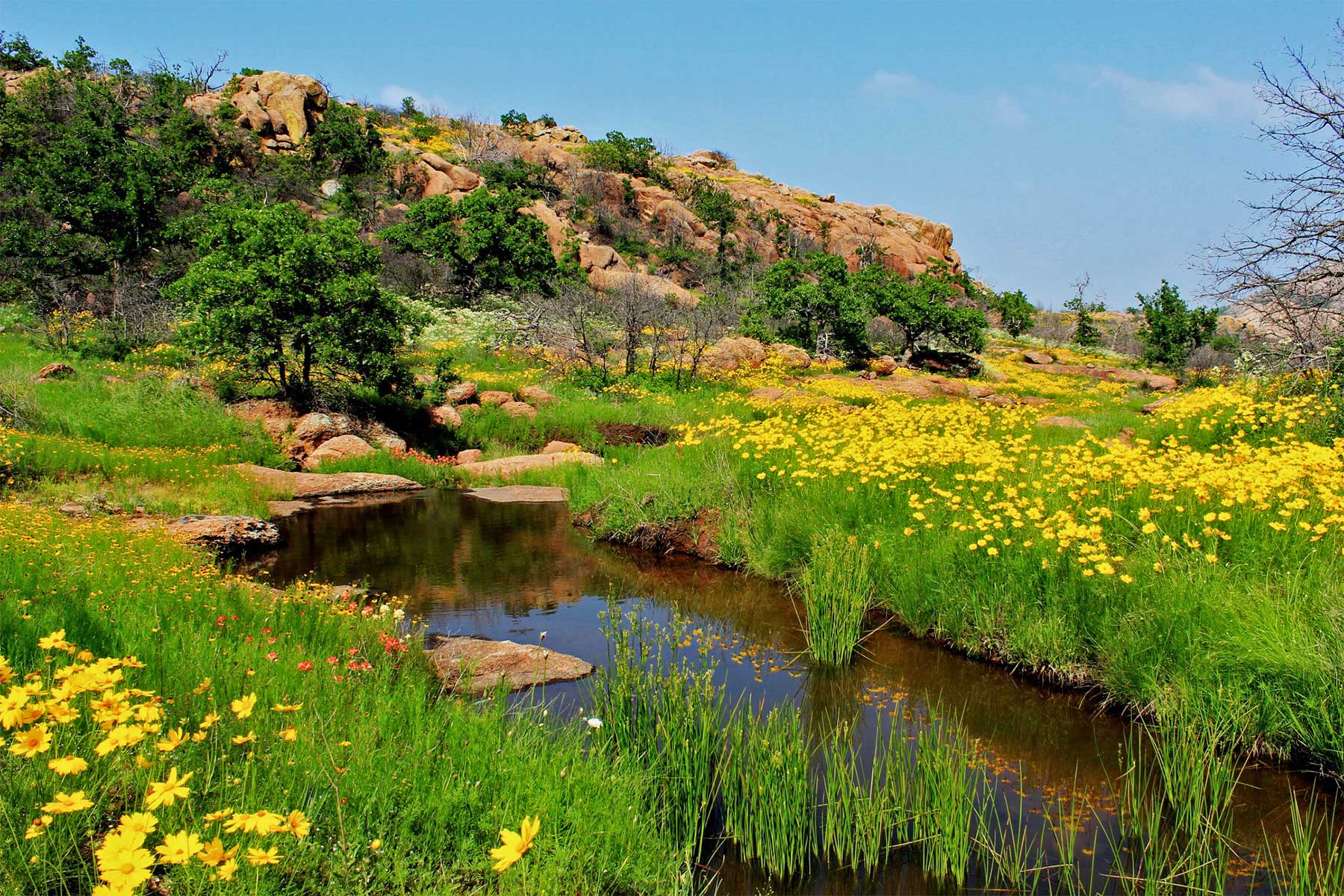
Wildlife
If you enjoy watching wildlife, four of the state’s species dwell here: alligator snapping turtle, Bell’s vireo, the northern scarlet snake and the river otter.
There are 254 bird species to be found on the refuge for at least part of the year. There are also 51 confirmed mammal species in the Deep Fork River basin.
Okmulgee County is a great place to see wildlife as it is home to over 50 species of reptiles and 22 species of amphibians.
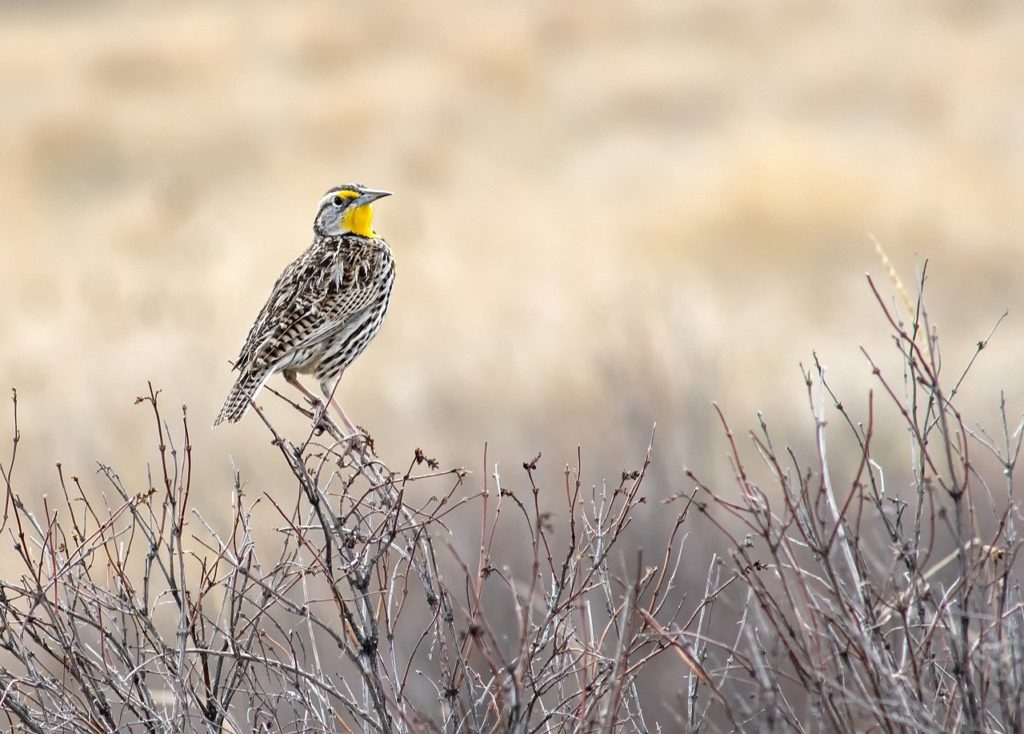
CHECK OUT: 8 EPIC KANSAS NATIONAL PARKS
3. Fort Smith National Historic Site
Distance From Tulsa: One hour & 43 minutes via OK-351 & I-40 E.
Fort Smith National Historic Site is a park located in the city of Fort Smith, Arkansas.
It was established as a national historic site in 1961 to preserve and interpret the history of Fort Smith, which played a significant role in the expansion of the American frontier and the administration of justice in the western territories of the United States.
Fort Smith was first established as a military fort in 1817 and served as a base for the US Army’s operations in the Indian Territory for several decades. The fort was also the site of the United States Court for the Western District of Arkansas, which was established in 1872 and had jurisdiction over cases in the Indian Territory.
The court was known for the administration of justice by Judge Isaac Parker, who became famous for his harsh sentencing and enforcement of the law in the western territories.
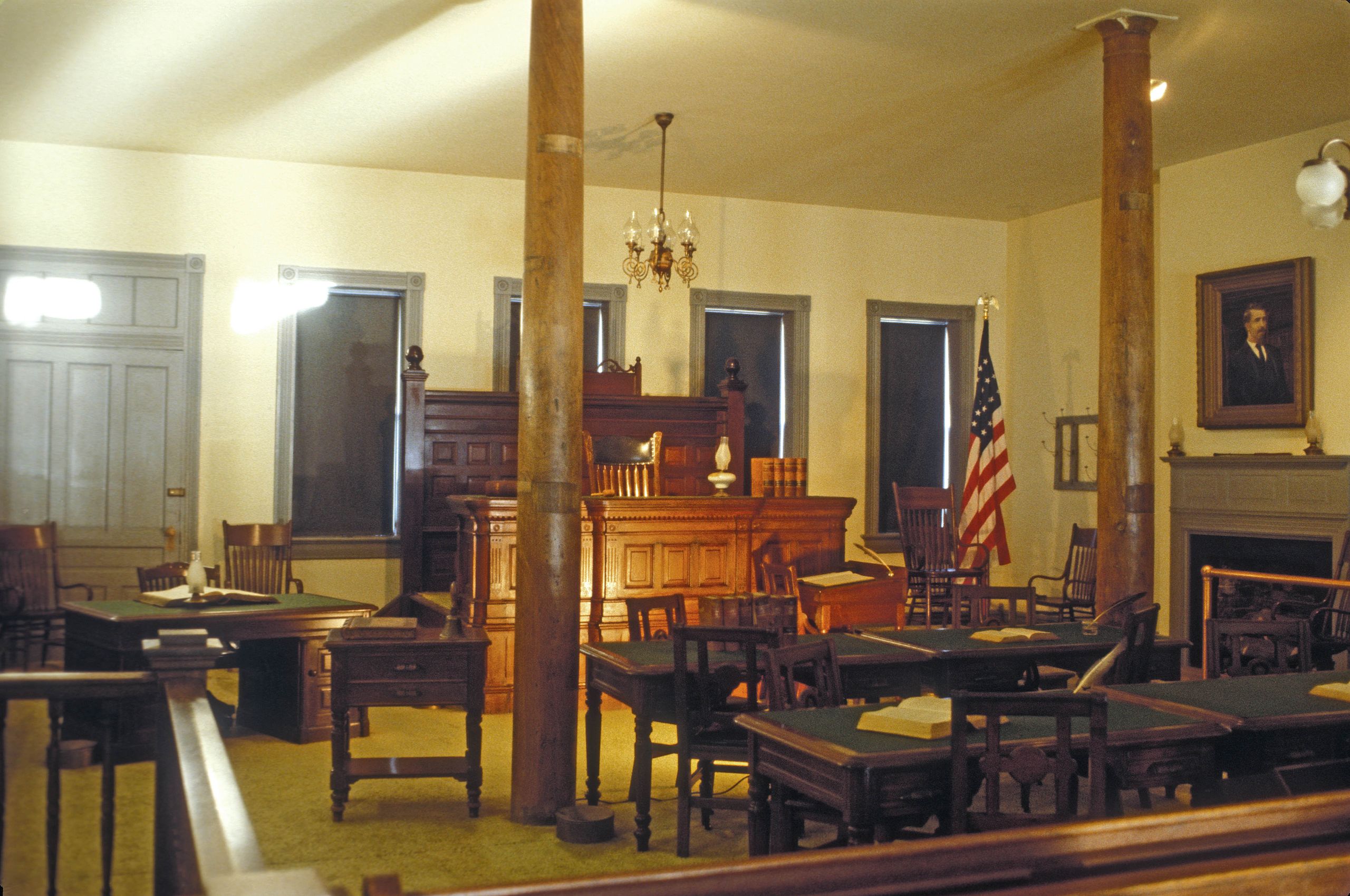
Throughout its history, Fort Smith played a key role in the expansion of the American frontier, as well as the forced relocation of Native American tribes from their ancestral lands.
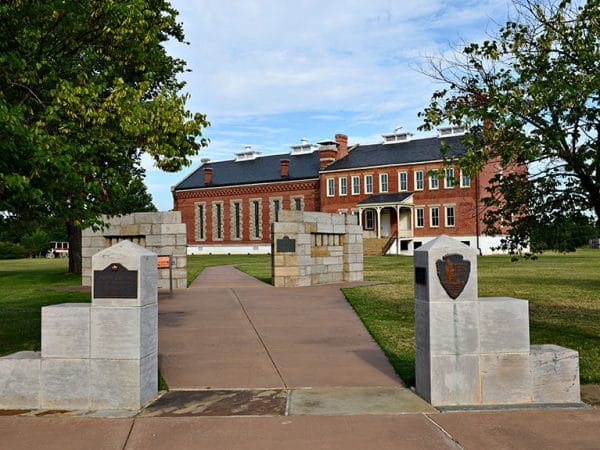
Fort Smith Today
Today, the Fort Smith National Historic Site is dedicated to preserving and interpreting this rich and complex history, and offers visitors a chance to explore the history of the fort, the court, and the people who lived and worked there.
The site features several historic buildings, including the remains of the original military fort, the barracks, and the courtrooms used by Judge Parker. Visitors can also tour the visitor center, which features exhibits and educational programs on the history of Fort Smith and its role in the expansion of the American frontier.
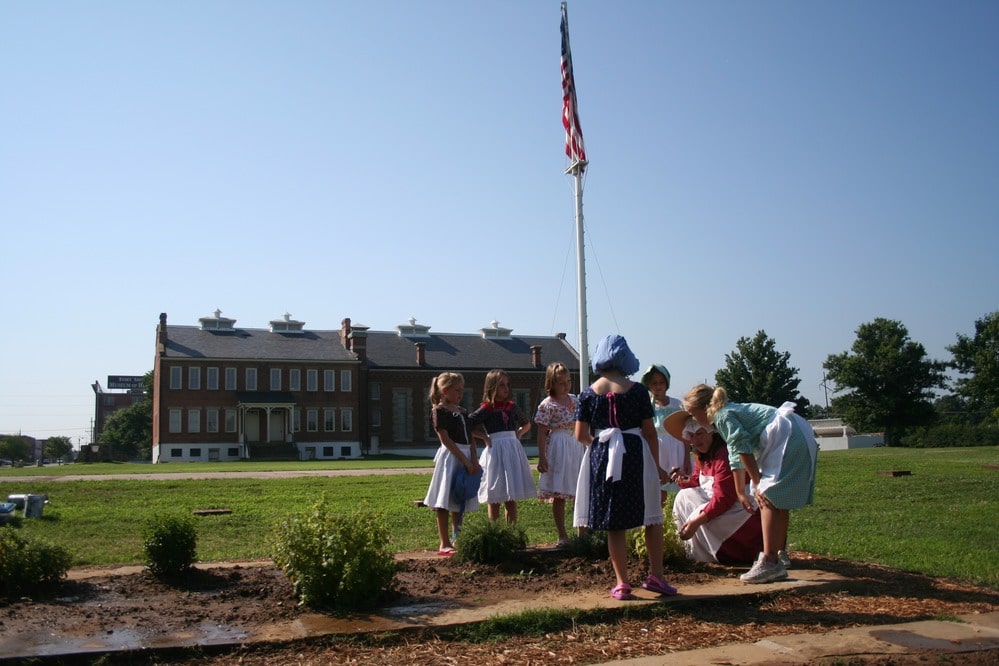
CHECK OUT: 7 EPIC ARKANSAS NATIONAL PARKS
More National Parks Near Tulsa
4. John Hope Franklin Reconciliation Park
Distance From Tulsa: 3 minutes via S. Boulder Ave., W Archer St. & N Detroit Ave.
John Hope Franklin Reconciliation Park is named after the late historian John Hope Franklin. The park was established in 2010 and is dedicated to promoting racial reconciliation and preserving the history of the Tulsa Race Massacre, which took place in 1921.
The Tulsa Race Massacre was one of the worst incidents of racial violence in American history, and resulted in the deaths of hundreds of African American residents and the destruction of the Greenwood District, also known as “Black Wall Street.” It was created as a way to commemorate the victims of the massacre and to promote understanding and healing between races.
See The Hand Of Friendship
The park features a variety of monuments and exhibits, including a Memorial Wall with the names of the victims, a bronze sculpture depicting the “hand of friendship” reaching across racial divides, and a series of interpretive signs that tell the story of the massacre and its impact on the city and its residents.
The park also includes a memorial garden, a small amphitheater, and a reflecting pool.
In addition to preserving the history of the Tulsa Race Massacre, John Hope Franklin Reconciliation Park serves as a symbol of hope and a space for reflection and education, and serves as a model for other cities working to promote racial reconciliation and heal the wounds of the past.

CHECK OUT: 10 BEST CIVIL RIGHTS SITES IN AMERICA
5. Philbrook Museum Of Art
Distance From Tulsa: 9 minutes via S Cincinnati Ave.
At More Than Just Parks we’re about more than just parks. It makes sense given our name so let’s take a look at a place that’s not a national park site, but still definitely worth a visit.
The Philbrook Museum of Art is an art museum located in Tulsa, Oklahoma, United States. It was opened in 1939 and is housed in a former 1920s Italian Renaissance-style villa set on 23 acres of formal gardens and meadows.
The museum features an extensive collection of American and European art, including paintings, sculptures, decorative arts, and textiles, with a particular emphasis on Renaissance and Baroque art, as well as American Indian art. Some of its notable holdings include works by Rembrandt, Van Gogh, Monet, and Matisse, among others.
In addition to its permanent collection, the Philbrook Museum of Art also presents rotating special exhibitions, educational programs, and cultural events. The museum is renowned for its beautiful setting and has become a popular destination for visitors to the Tulsa area.

CHECK OUT: 25 BUCKET-LIST FAMOUS LANDMARKS IN AMERICA (MUST-SEE)
6. Washita Battlefield National Historic Site
Distance From Tulsa: Three hours & 36 minutes via I-44 & I-40 W.
The Washita Battlefield National Historic Site is located in western Oklahoma and is a designated National Historic Site that preserves the site of the Battle of Washita River, which took place on November 27, 1868.
The Battle of Washita River was fought between the United States Army and the Southern Cheyenne during the Indian Wars. The conflict began as a result of increasing tensions between the Cheyenne and settlers moving into the area.
In November 1868, Lieutenant Colonel George Armstrong Custer led an attack on a Cheyenne village on the Washita River, resulting in the deaths of many Native Americans, including women and children.

Established To Commemorate The Battle Of Washita River
The Washita Battlefield National Historic Site was established in 1996 to commemorate the events of the Battle of Washita River and to provide an understanding of the conflict and its significance in American history.
The site includes a visitor center, museum, and several walking trails that lead to the site of the battle, including the remains of the Cheyenne village.
Visitors to the Washita Battlefield National Historic Site can learn about the events of the battle, the history of the Cheyenne people, and the impact of the conflict on Native American communities and the American West.
The site is considered a significant historical and cultural resource, and provides an important reminder of the complex and often violent history of the American West.
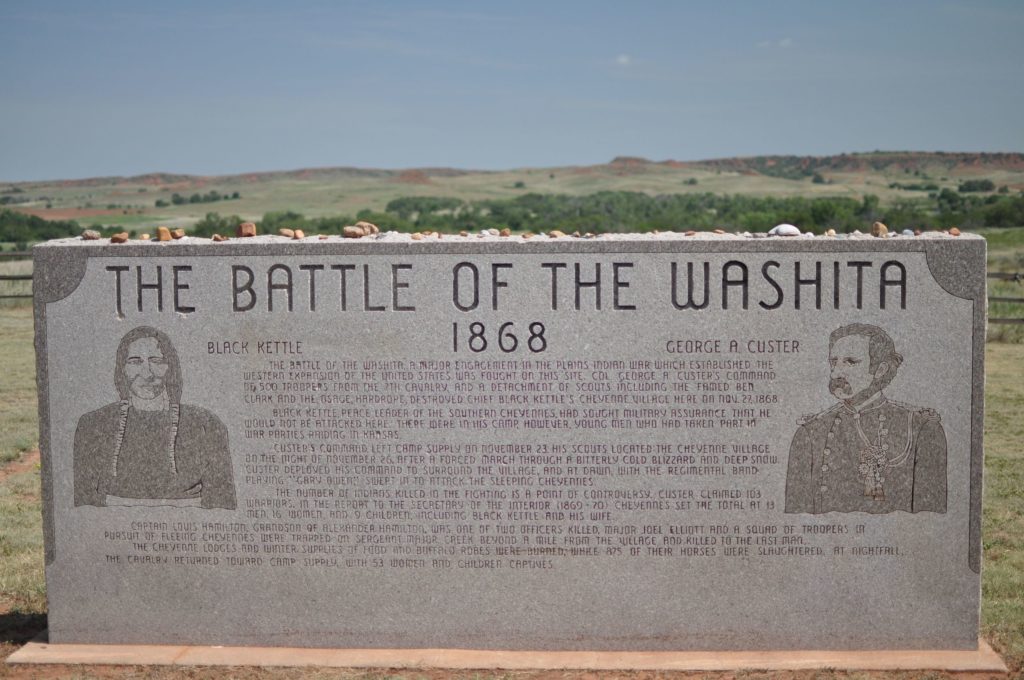
The Dust & Fire Trail
Visitors can learn about this time in history at the Washita Battlefield National Historic Site in Roger Mills County. There is a one and a half mile trail which is self guided with many brochure stops along the way.
There’s also a shorter Dust & Fire Trail. While walking it, you can learn about life on the prairie. Visitors can also explore flora, fauna, a dugout house, and a working windmill.
If you’ve never been there before then I would highly recommend starting your visit at the visitor center. It provides interactive and educational experiences including a 27-minute park film called Destiny at Dawn.
The film describes the engagement which happened on the site and the events leading up to it. There’s also a museum providing views of the Washita River Valley, which includes the Western National Parks Association Bookstore.
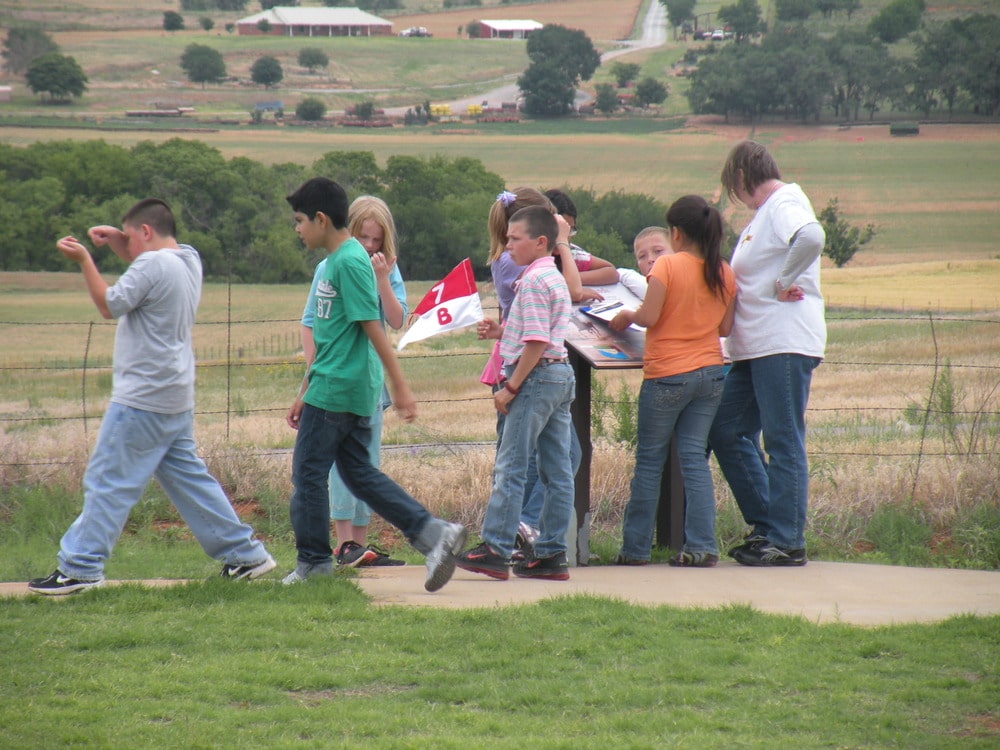
National Parks Near Tulsa FAQ
The Oklahoma national park sites include the following:
1- Fort Smith National Historic Site
2- Washita Battlefield National Historic Site
3- Oklahoma City National Memorial
4- Santa Fe National Historic Trail
5- Trail of Tears National Historic Trail
6- Chickasaw National Recreation Area
Tulsa is home to one of the largest curations of Art Deco architecture in the country. The vibrant city offers cultural attractions from Philbrook and Gilcrease Museums, to theater shows at the Performing Arts Center including Tulsa Ballet, Tulsa Opera, Tulsa Symphony Orchestra and traveling Broadway shows.
Why Trust Us About National Parks Near Tulsa?
We’re Jim Pattiz and Will Pattiz, collectively known as the Pattiz Brothers (and sometimes the Parks Brothers) and we absolutely LOVE the national parks.
You should probably know that we don’t just make this stuff up out of thin air. We’ve spent our entire adult lives exploring and filming America’s national parks and public lands.
We’ve worked with the National Park Service, the Department of Interior, USDA, and the U.S. Forest Service for years creating films on important places and issues. Our work has been featured in leading publications all over the world and even some people outside of our immediate family call us experts on the national parks.
Meet The Parks Brothers
Map Of National Parks Near Tulsa
List Of National Parks Near Tulsa
- Chickasaw National Recreation Area
- Deep Fork National Wildlife Refuge
- Fort Smith National Historic Site
- John Hope Franklin Reconciliation Park
- Philbrook Museum Of Art
- Washita Battlefield National Historic Site
We Hope You’ll Follow Our Journey
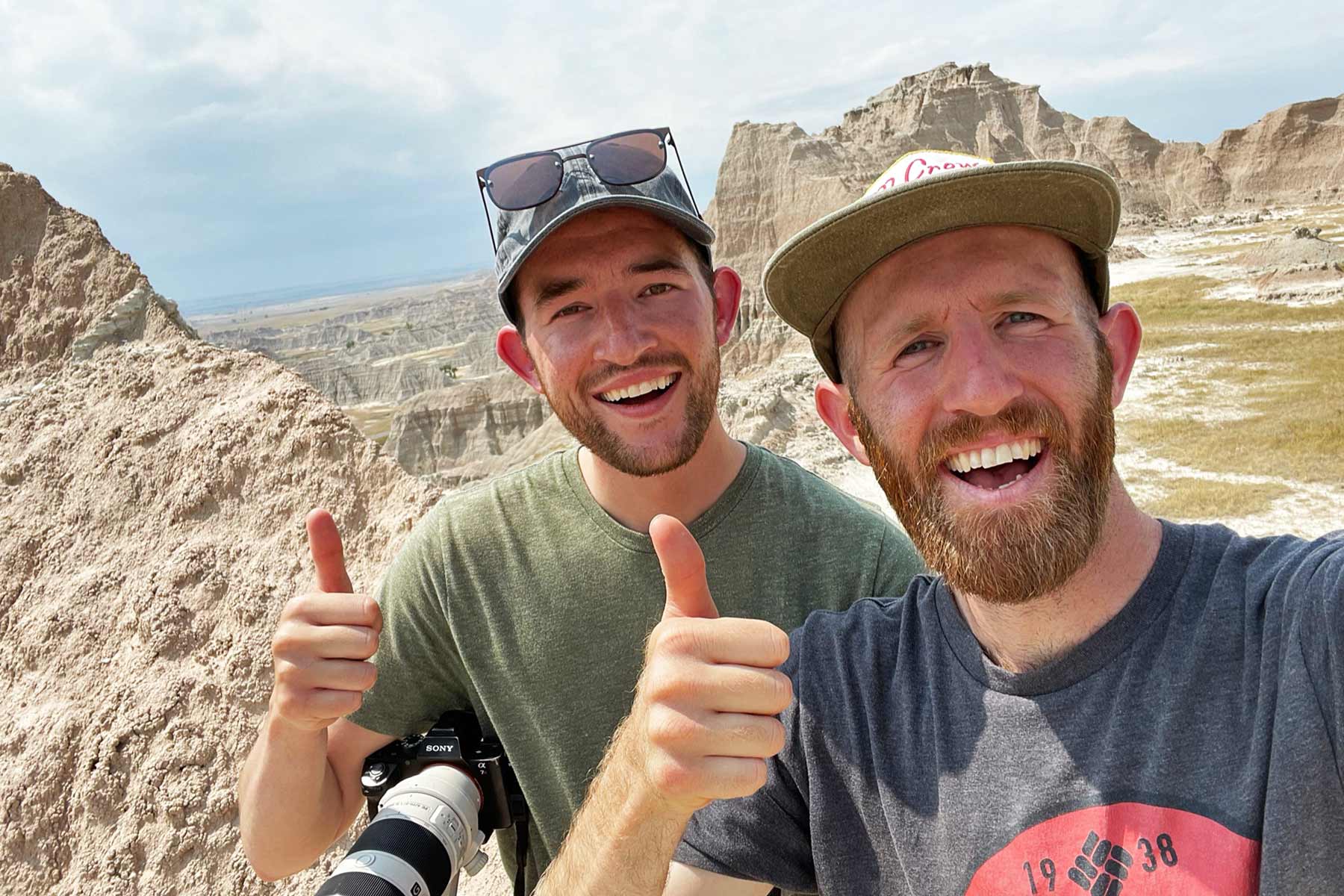
Our goal here at More Than Just Parks is to share the beauty of America’s national parks and public lands through stunning short films in an effort to get Americans and the world to see the true value in land conservation.
We hope you’ll follow our journey through the parks and help us to keep them the incredible places that they are. If you’re interested in joining the adventure then please sign up below!
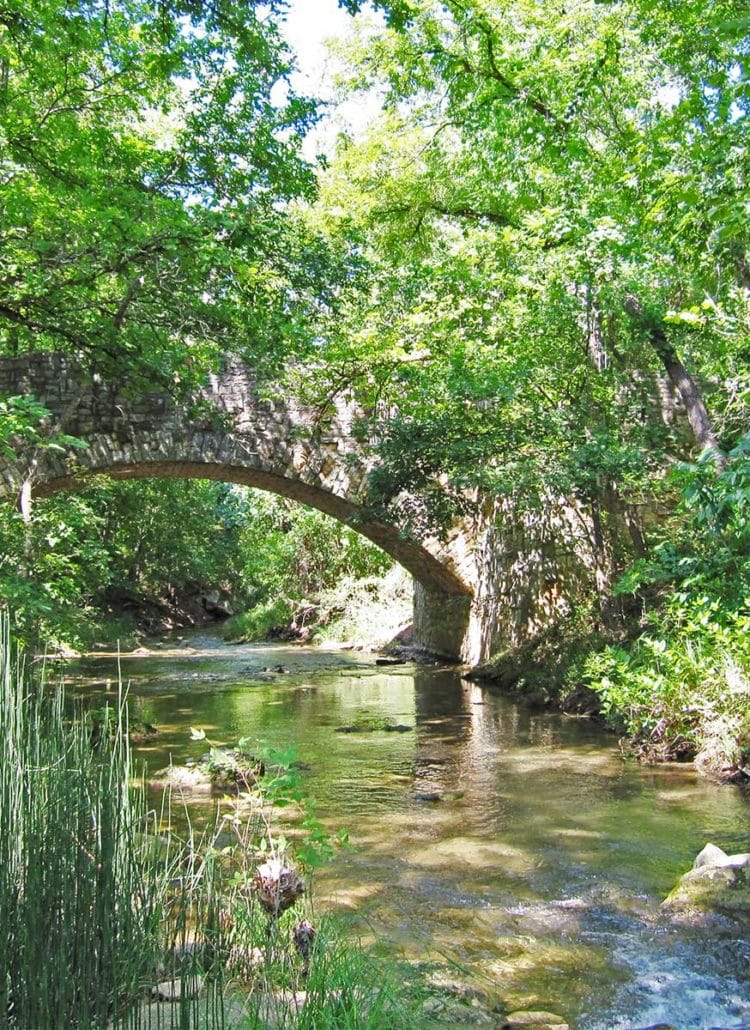
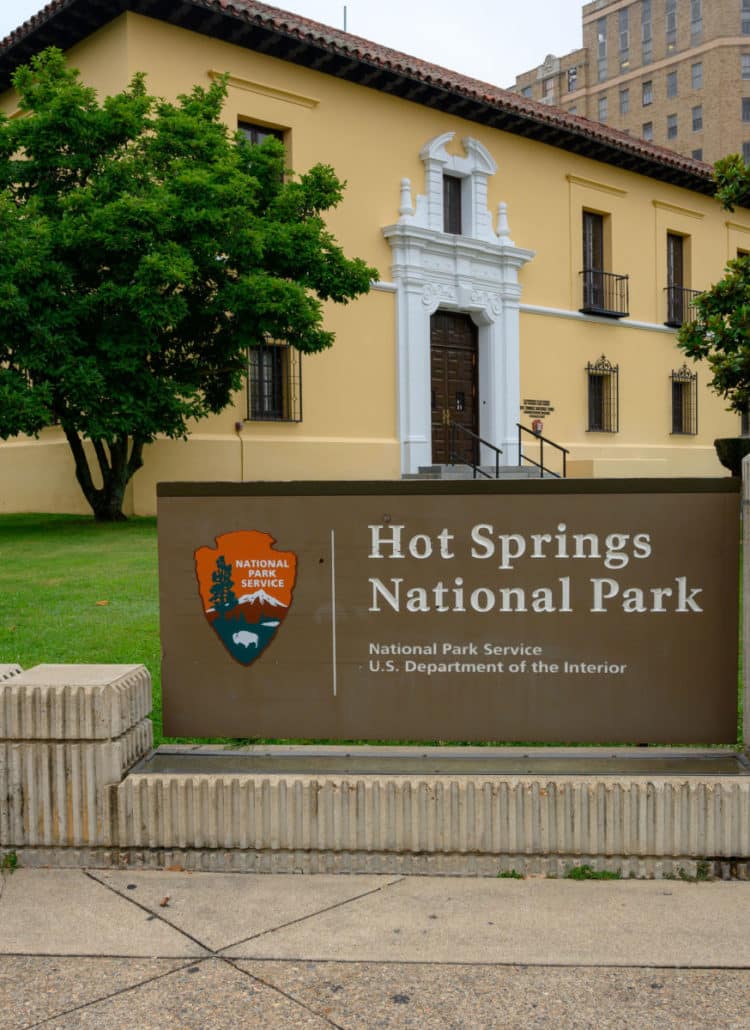
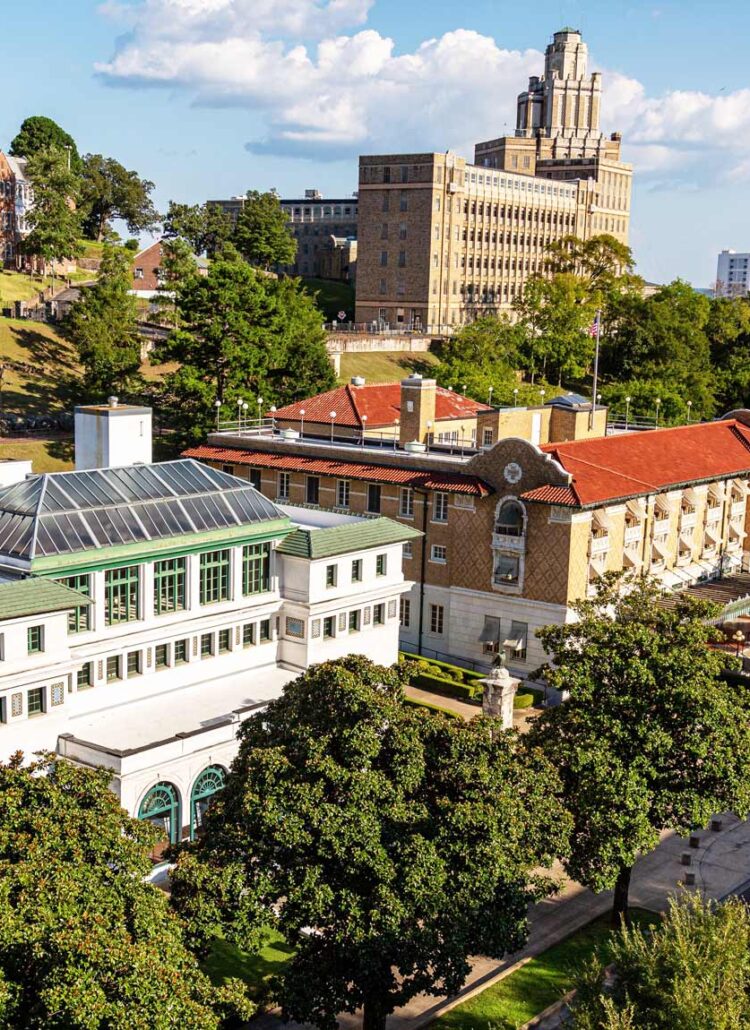
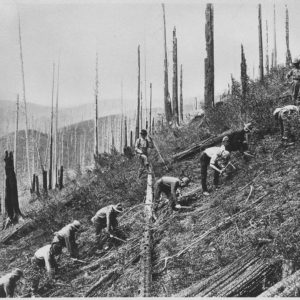
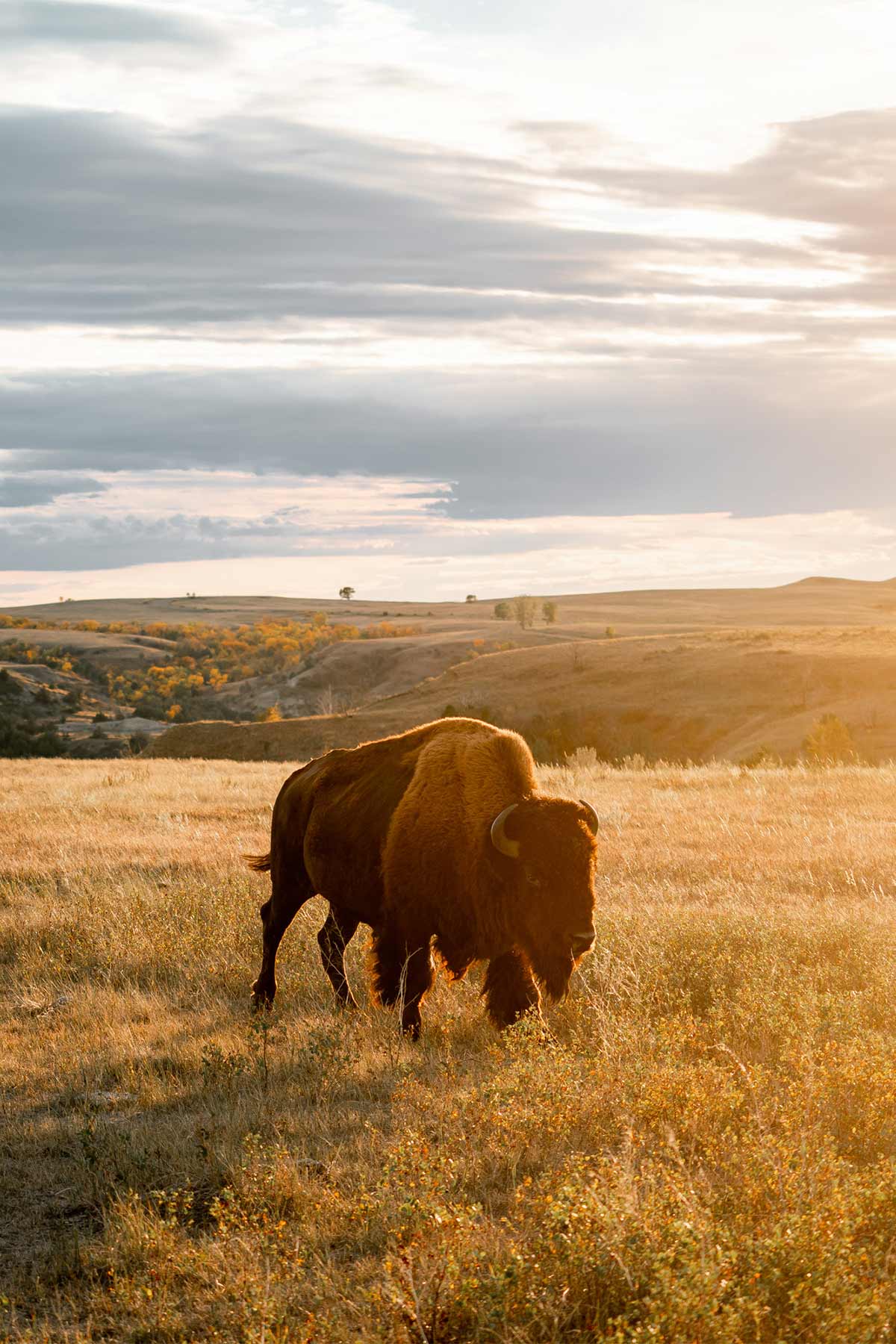
Leave a Reply